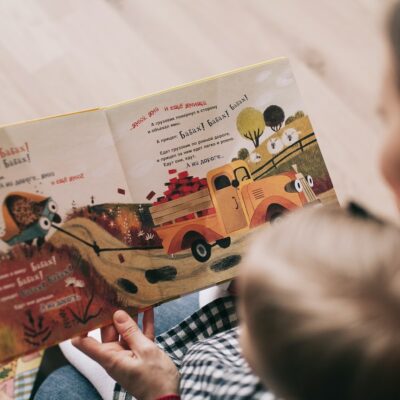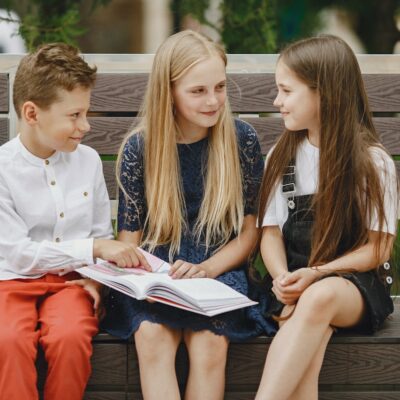The Power of Words: How Children’s Literature Shapes Language Skills for the Workplace

In the ever-evolving landscape of the workplace, the ability to communicate effectively has become a cornerstone of success. Whether it’s drafting persuasive emails, engaging in impactful presentations, or fostering collaborative relationships, language proficiency is the thread that weaves through professional achievement. Yet, the roots of these crucial language skills often trace back to a time when imagination knows no bounds – childhood. In this exploration, we delve into the captivating narrative of how children’s literature, with its timeless tales and vivid characters, lays the foundation for the robust language skills essential for the demands of the modern workplace. Join us on a journey where words hold the key to unlocking a brighter, more eloquent future in the professional world.
The Early Years: Building Language Foundations
In the tapestry of human development, the early years of childhood serve as the loom upon which the intricate patterns of language skills are woven. It’s during this formative period that children embark on their linguistic journey, often guided by the enchanting world of children’s literature.
Picture a young mind absorbed in the pages of a storybook, each word a brushstroke painting vibrant landscapes of imagination. These early encounters with language, nurtured by bedtime stories and colorful illustrations, lay the cornerstone for vocabulary expansion. With every tale, children are introduced to new words, expressions, and ideas, slowly constructing their lexicon.
Yet, it’s not merely about accumulating words; children’s literature goes further. It instills the cadence of language, teaching the rhythms of dialogue and the nuances of communication. The characters within these stories become companions, helping young readers understand the subtleties of emotions and social interactions.
Children’s literature serves as a bridge between the realm of imagination and the practicalities of everyday life. Through storytelling, youngsters develop a narrative competence that allows them to express their thoughts, ideas, and experiences. This narrative competence forms the foundation of effective communication—a skill that will serve them well as they navigate the intricate web of workplace dynamics in the future.
Moreover, the act of reading itself becomes a source of bonding between parents, caregivers, and children. It fosters a sense of togetherness and creates a safe space for exploring new concepts and addressing questions. These shared reading experiences not only enhance language development but also strengthen the parent-child relationship, providing emotional support crucial for overall growth.
In essence, the early years of childhood, enriched by the wonders of children’s literature, are the building blocks of language skills that extend far beyond the realm of bedtime stories. They cultivate a love for language and storytelling, nurturing the communicators and leaders of tomorrow’s workplace.
As we continue our journey through the impact of children’s literature on language skills, we’ll explore how these early foundations shape cognitive development and critical thinking.
Cognitive Development and Critical Thinking
In the intricate tapestry of childhood development, cognitive growth and critical thinking skills emerge as jewels meticulously threaded into the fabric. Children’s literature, with its rich narratives and thought-provoking tales, plays a pivotal role in nurturing these cognitive abilities.
As young readers navigate through the twists and turns of a story, they are subconsciously engaging in cognitive exercises. They decipher complex plots, identify cause-and-effect relationships, and anticipate character motivations. These mental gymnastics stimulate their problem-solving faculties, honing the very skills that are prized in the professional world.
Furthermore, children’s literature invites readers to explore diverse perspectives and multidimensional characters. This exposure to different viewpoints fosters empathy and encourages critical thinking. It prompts young minds to question, analyze, and evaluate, skills that are indispensable for making informed decisions in the workplace.
In essence, the stories that children absorb during their formative years are not merely tales; they are exercises in cognitive development and critical thinking. They serve as mental playgrounds where creativity and analytical prowess intertwine, preparing them to tackle the challenges of the modern workplace with confidence and clarity.
Cultural Awareness and Diversity
In an increasingly interconnected world, cultural awareness and diversity have become essential facets of professional competence. Children’s literature, with its kaleidoscope of characters and settings, acts as a gateway to understanding the richness of human diversity from an early age.
Through the pages of books, children embark on literary journeys that traverse continents, cultures, and historical periods. They meet characters from different backgrounds, each with a unique story to tell. These encounters foster cultural curiosity and broaden their horizons, planting the seeds of cultural awareness.
Moreover, children’s literature serves as a powerful tool for promoting inclusivity and empathy. It introduces young readers to individuals from diverse backgrounds, helping them recognize the value of differences and the importance of treating all with respect. These early lessons in inclusivity and empathy lay the foundation for harmonious workplace relationships.
As children grow into professionals, the cultural awareness instilled by children’s literature becomes a vital asset. In a globalized job market, individuals who can navigate cultural nuances and embrace diversity are better equipped to collaborate effectively with colleagues and clients from all corners of the world.
In conclusion, children’s literature not only shapes language skills but also nurtures cultural awareness and a deep appreciation of diversity. It equips the professionals of tomorrow with the essential tools to thrive in a globalized and multicultural workplace.
Language Skills for the Modern Workplace
In the ever-evolving landscape of the modern workplace, language skills have transcended their traditional boundaries. Today, effective communication extends beyond verbal interactions to encompass a digital realm dominated by emails, video conferences, and social media. Children’s literature, with its emphasis on storytelling, narrative structure, and language mastery, equips individuals with a multifaceted set of language skills uniquely suited to the demands of the contemporary professional world.
Within the digital workspace, concise and compelling writing is paramount. The early exposure to diverse writing styles in children’s literature hones the ability to craft clear and persuasive written content. Moreover, the storytelling element of children’s books fosters the skill of narrative communication, a valuable asset in presenting ideas persuasively and engagingly.
In addition, children’s literature often explores themes of leadership, teamwork, and conflict resolution through its characters and plots. These stories offer valuable insights into effective interpersonal communication and collaboration, skills that are essential for thriving in today’s team-centric work environments.
As the workplace continues to evolve, individuals who have been shaped by the language skills nurtured through children’s literature are better prepared to navigate the complex, multifaceted nature of modern communication.
Strategies for Incorporating Children’s Literature
Integrating children’s literature into early education curricula is not merely about reading stories—it’s a strategic approach to nurturing language skills. Here, we delve into effective strategies for incorporating children’s literature to maximize its impact on language development.
- Diverse Book Selection: Curate a diverse collection of books that represent various cultures, perspectives, and genres. Exposure to a wide range of literature enriches vocabulary and fosters cultural awareness.
- Interactive Reading: Encourage interactive reading sessions where children actively participate in storytelling. Ask open-ended questions, encourage discussions, and explore themes and morals within the stories.
- Writing and Storytelling Exercises: Use children’s literature as a springboard for creative writing activities. Encourage students to write their own stories or reinterpret existing ones, promoting language expression and imagination.
- Multimedia Resources: Incorporate multimedia resources such as audiobooks and digital storytelling platforms to cater to diverse learning styles and engage tech-savvy students.
- Cross-Curricular Integration: Explore opportunities to integrate children’s literature into other subjects like science or history. This interdisciplinary approach reinforces vocabulary and critical thinking skills.
- Community Involvement: Engage parents and caregivers by encouraging them to read with their children at home. Create a community of readers to support language development.
These strategies not only enhance language skills but also cultivate a lifelong love for reading and learning. They provide a solid foundation for future academic and professional success.
Conclusion
In the grand narrative of personal and professional development, the role of children’s literature in shaping language skills for the workplace is unmistakably profound. As we conclude our journey through the pages of this exploration, we are reminded of the enduring power of words and stories.
Children’s literature serves as the cornerstone upon which language skills are built. It’s where young minds embark on their linguistic journeys, where curiosity is nurtured, and where the magic of communication begins. From vocabulary expansion to narrative competence, children’s literature lays the groundwork for robust language skills that extend into the modern workplace.
But it doesn’t stop there. The influence of children’s literature extends beyond language proficiency. It fosters cognitive development, encourages critical thinking, promotes cultural awareness, and instills values of diversity and inclusivity. It equips the professionals of tomorrow with the tools to navigate the complexities of a globalized and multicultural world.
The stories we encounter in childhood become an integral part of our identities, shaping not only how we communicate but also how we perceive and interact with the world. They are the stories that stay with us, influencing our choices, our attitudes, and our ability to connect with others in the professional sphere.
In closing, as we reflect on the power of words and stories, let us remember that the pages of children’s literature are more than just pages; they are the building blocks of communication, the keys to understanding, and the doors to a brighter, more eloquent future in the workplace.
FAQ
Q1: Can children’s literature really make a significant difference in language skills for the workplace?
Absolutely. Children’s literature provides a strong foundation for language development by expanding vocabulary, nurturing narrative competence, and fostering a love for storytelling. These skills are invaluable in the workplace, where effective communication is key to success.
Q2: How can parents and educators best incorporate children’s literature into language development?
One effective approach is to curate a diverse collection of books, encourage interactive reading, and use literature as a springboard for writing and creative activities. Engaging children in discussions about the themes and morals of stories also enhances their language skills.
Q3: Does the influence of children’s literature on language skills persist into adulthood?
Yes, the impact of childhood reading can have a lasting effect on language proficiency and communication abilities well into adulthood. Many individuals attribute their professional success to the language skills honed through early exposure to literature.









